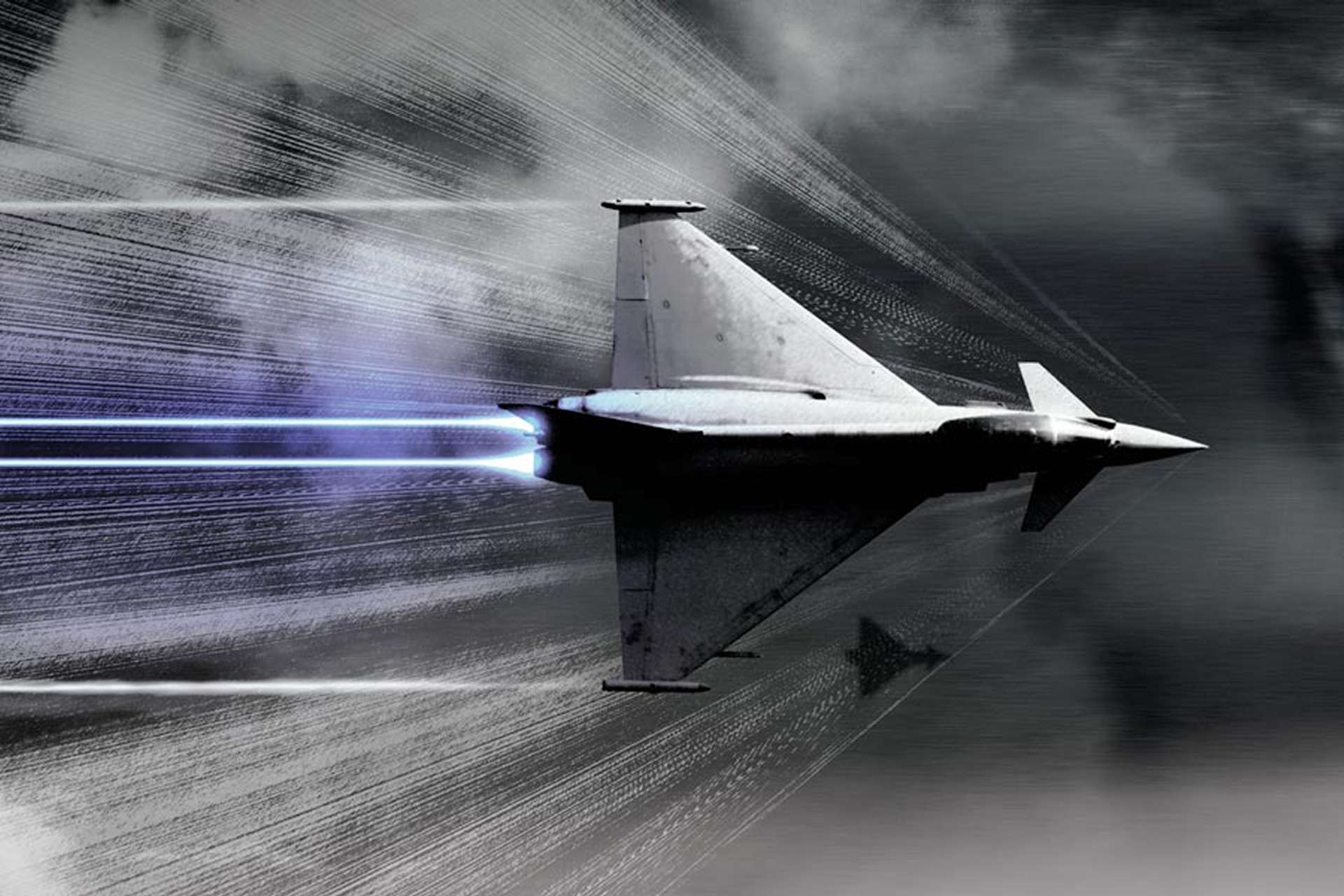Future of Eurofighter Typhoon Multi-Role Fighter Unveiled by EuroDASS Consortium

{loadposition bannertop}
{loadposition sidebarpub}
The EuroDASS consortium, comprising Leonardo, ELT Group, Indra, and Hensoldt, has unveiled details of the next-generation electronic warfare (EW) system designed for the Eurofighter Typhoon. Developed in partnership with BAE Systems, this cutting-edge system aims to protect the Typhoon against emerging threats through the 2060s and beyond, enhancing situational awareness and survivability without requiring structural modifications to the aircraft.
Follow Army Recognition on Google News at this link
The EuroDASS consortium has unveiled details of the next-generation electronic warfare system designed for the Eurofighter Typhoon. (Picture source: EuroDass)
Drawing on Europe’s sovereign expertise in electronic warfare, this new system integrates a range of advanced capabilities. It includes Digital Radio Frequency Memory (DRFM) technology for complex threat characterization, interfaces for a high-powered electronic attack pod essential for Suppression of Enemy Air Defence (SEAD) missions, and wideband Active Electronically Scanned Array (AESA) electronic countermeasures (ECM) with enhanced power for improved self-protection. These innovations align with NATO’s operational requirements, ensuring that the Typhoon remains a formidable asset on the modern battlefield.
Designed as a direct replacement for the Eurofighter’s existing Praetorian Defensive Aids Sub-System (DASS), the new system requires no structural modifications. This ensures seamless integration for both new aircraft and those already in service, while preserving the Typhoon’s aerodynamic profile and flight performance. The result is a more capable, resilient, and available aircraft, meeting the operational demands of air forces across Europe and the Middle East.
Development milestones for the next-generation EW system include the completion of the “Praetorian eVolution” concept phase and extensive flight trials. In 2023, digital receiver and band extension technologies were tested on a prototype. In 2024, flight trials aboard an operational Eurofighter Typhoon validated the system’s performance against representative threat scenarios. These tests not only advanced the system’s capabilities but also provided critical data for its ongoing refinement.
The data-centric architecture of this system represents a significant technological leap. A high-speed, high-bandwidth infrastructure transmits raw signal data to an advanced central processing hub, enabling pilots to detect, prioritize, and counter multiple threats simultaneously and at extended ranges. Exploiting Cognitive Electronic Warfare (CEW), powered by artificial intelligence and machine learning, the system dynamically adapts to emerging threats, offering unprecedented operational flexibility.
The current Praetorian system, in service for over 30 years, has demonstrated its effectiveness against a wide range of threats, including radar-guided and infrared missiles. Under the Eurofighter’s Phase 4 Enhancement (P4E) program, this system is already being upgraded to maximize its synergy with the Typhoon’s AESA radar options, including the European Common Radar System (ECRS).
With these advancements, the Eurofighter Typhoon solidifies its position as a cornerstone of European and Middle Eastern air defense, providing air forces with a state-of-the-art solution to meet future challenges in an ever-evolving operational landscape.

{loadposition bannertop}
{loadposition sidebarpub}
The EuroDASS consortium, comprising Leonardo, ELT Group, Indra, and Hensoldt, has unveiled details of the next-generation electronic warfare (EW) system designed for the Eurofighter Typhoon. Developed in partnership with BAE Systems, this cutting-edge system aims to protect the Typhoon against emerging threats through the 2060s and beyond, enhancing situational awareness and survivability without requiring structural modifications to the aircraft.
The EuroDASS consortium has unveiled details of the next-generation electronic warfare system designed for the Eurofighter Typhoon. (Picture source: EuroDass)
Drawing on Europe’s sovereign expertise in electronic warfare, this new system integrates a range of advanced capabilities. It includes Digital Radio Frequency Memory (DRFM) technology for complex threat characterization, interfaces for a high-powered electronic attack pod essential for Suppression of Enemy Air Defence (SEAD) missions, and wideband Active Electronically Scanned Array (AESA) electronic countermeasures (ECM) with enhanced power for improved self-protection. These innovations align with NATO’s operational requirements, ensuring that the Typhoon remains a formidable asset on the modern battlefield.
Designed as a direct replacement for the Eurofighter’s existing Praetorian Defensive Aids Sub-System (DASS), the new system requires no structural modifications. This ensures seamless integration for both new aircraft and those already in service, while preserving the Typhoon’s aerodynamic profile and flight performance. The result is a more capable, resilient, and available aircraft, meeting the operational demands of air forces across Europe and the Middle East.
Development milestones for the next-generation EW system include the completion of the “Praetorian eVolution” concept phase and extensive flight trials. In 2023, digital receiver and band extension technologies were tested on a prototype. In 2024, flight trials aboard an operational Eurofighter Typhoon validated the system’s performance against representative threat scenarios. These tests not only advanced the system’s capabilities but also provided critical data for its ongoing refinement.
The data-centric architecture of this system represents a significant technological leap. A high-speed, high-bandwidth infrastructure transmits raw signal data to an advanced central processing hub, enabling pilots to detect, prioritize, and counter multiple threats simultaneously and at extended ranges. Exploiting Cognitive Electronic Warfare (CEW), powered by artificial intelligence and machine learning, the system dynamically adapts to emerging threats, offering unprecedented operational flexibility.
The current Praetorian system, in service for over 30 years, has demonstrated its effectiveness against a wide range of threats, including radar-guided and infrared missiles. Under the Eurofighter’s Phase 4 Enhancement (P4E) program, this system is already being upgraded to maximize its synergy with the Typhoon’s AESA radar options, including the European Common Radar System (ECRS).
With these advancements, the Eurofighter Typhoon solidifies its position as a cornerstone of European and Middle Eastern air defense, providing air forces with a state-of-the-art solution to meet future challenges in an ever-evolving operational landscape.





